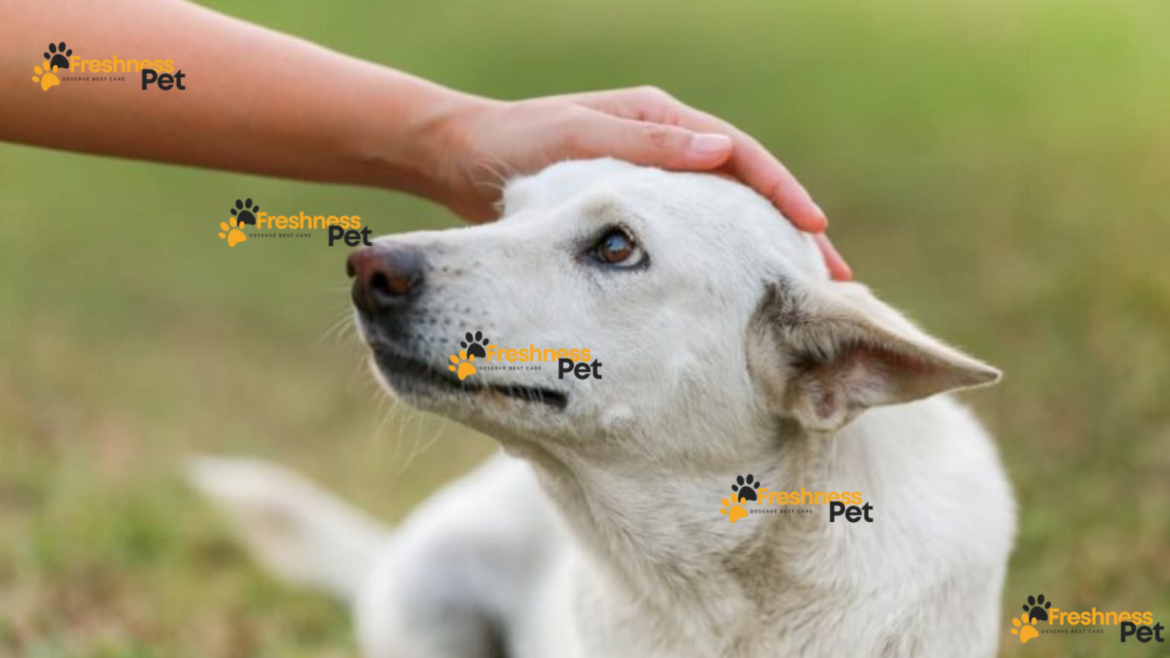Addison’s disease is also known as hypoadrenocorticism, is an illness that causes major health problems for dogs and humans as well. It occurs when the adrenal glands which are found near the kidneys, do not produce sufficient hormones as needed. These hormones, which are cortisol and aldosterone, play a very important role in maintaining different kinds of functions in the body for health. Early detection of this disease soon is very important, that manages the illness of the dog better and keeps it healthy. In this article, we’ll explore the early symptoms of Addison’s disease in dogs to give advice to pet owners which is important for taking action quickly.
What is Addison’s Disease in Dogs?
Before we look into the symptoms, it’s essential to understand the basics about Addison’s disease.The adrenal glands produce hormones for the dog’ body that controls the proper way in which its body uses food for energy. These hormones regulate blood pressure, and stress also. When these glands do not produce hormones, this process gets disrupted and causes various health issues for the dog and it becomes sick.
What are the Early Symptoms of Addison’s Disease in Dogs – Discover Vital Signs to Watch For!
Following are the early symptoms of Addision’s Disease in Dogs:
Lethargy and Weakness
Dogs with Addison’s disease appear more tired than normal, which shows a common sign that they are not feeling well.They may be sleeping or resting more than it typically would and show little interest in activities they once enjoyed like playing and running around. This tiredness in dogs is due to the lack of a hormone called cortisol, whose absence causes their energy levels to drop.
Gastrointestinal Issues
Digestive problems such as vomiting, diarrhea, or a lack of appetite is a usual sign that many dogs with this illness experience. Sometimes these gastrointestinal problems come and go, which makes it hard to know for sure whether the dog has Addision disease. Therefore, seeing a vet is crucial to figure out the disease behind the symptoms of digestive problems.
Weight Loss
Despite the dog eating the same amount of food or even less, affected dogs might still lose their weight. This weight loss often happens slowly but over time you will see the dog is losing weight even eating normally. This happens because its body is unable to process nutrients from the food efficiently due to hormone imbalance.
Increased Thirst and Urination
Dogs with Addison’s disease might drink more water due to excessive thirst and release more urine. This symptom is known as polydipsia and polyuria, which is connected because there is a loss of aldosterone hormone. In the disease of Addison’s, this hormone imbalances sodium and potassium levels in the body.
Dehydration
As the dog urinates and vomits more than usual ,in this way it becomes dehydrated.Dehydration can make feel even more unwell and exacerbate other health problems worse.For example a dog who is already feeling fatigued and is suffering from a stomach ache, being dehydrated can make these issues more severe for its health.
Trembling or Shaking
Some dogs tremble or shake, it seems that they are suffering from cold or anxiety. But, this may be a symptom of Addison’s disease. In this condition, the cortisol and aldosterone hormones become imbalances in the body that affect the levels of electrolyte.It is worth important to know that the primary function of cortisol and aldosterone is to regulate sodium and potassium levels in a dog’s body. As in the case of Addison’s disease, these hormones are low which causes muscle weakness and trembling.
Abdominal Pain
Dogs with Addison disease might show pain in their abdomen. They make a soft and high pitched noise, which shows that they are in pain and expressing their feelings.This high pitch noise is termed as whining. While the dogs are uncomfortable due to abdominal pain, they curl up with their back rounded and legs tucked under them. Another way they might sit low to the ground with their belly close to the floor, which shows that they are trying to make themselves feel better during the pain. It is important to pay attention to these signs and consult with a vet to find out what is causing the pain.
Poor Coat Condition
When a dog suffers from Addison’s disease, its fur looks less shiny and dry. This happens because the dog is unhealthy, as addison’s disease makes it impossible for their body and fur to absorb important nutrients from the food. These nutrients include omega 3 fatty acids and vitamins.By noticing the condition of fur, you can pinpoint that the dog might be sick due to this disease. Therefore, it is important to consult the vet as soon as possible.
Behavioral Changes
Pet owners may notice behavioral changes such as anxiety, nervous, worried, fearful in situations where these dogs must be relaxed in normal circumstances. They might seem scared from being calm to being jumpy and clingy to their owners.This shows that epinephrine (Adrenaline) and norepinephrine imbalances in their brain that affect their mood and stress level,which is a main symptom for Addision’s disease. These dogs also express feelings of anxiety by barking and whining. If you notice these signs, then a qualified vet should be the best option to protect your dog from these unhealthy signs.
Low Blood Pressure
Addison disease may cause low blood pressure due to lack of important hormones, which are cortisol and aldosterone. Cortisol usually keeps the blood sugar levels normal in dogs, whereas aldosterone controls sodium and potassium levels in the bodies of dogs to maintain blood pressure. So, a dog who seems to be weak while walking and running, may be the early sign that your dog is suffering from Addison’ disease.
Diagnosing Addison’s Disease
A vet recognizes these early symptoms along with diagnostic tests as mandatory steps to perform a thorough examination of dog’s health.The diagnosis mainly include:
Blood Tests
By examining blood tests at specialized labs can reveal electrolyte imbalances i.e low sodium and high potassium levels of the dog’s body and anemia. These imbalances of hormones helps the veterinarian to diagnose Addison disease
ACTH Stimulation Test
The ACTH stimulation test is important as it measures the level of cortisol in the dog’s body. Veterinarian reads the test report and finds out whether the cortisol level is at least 7-20 µg/dL or more.However, in case the cortisol levels remain below 2-4 µg/dL which confirms that the dog is suffering from Addison’s disease.
Urinalysis
A vet lab technician examines the urine specific gravity whether the urine is less concentrated i.e lower USG and does not range from 1.020 to 1.050. In this case, the vet might suggest Addison disease for the dog.However, he will also identify dehydration and kidney function issues by observing the presence of protein in the urine (proteinuria). He also gets additional clues about the dog’s overall health by the urinalysis test report with presence of glycosuria i.e glucose in urine.
Imaging
In some cases, X-ray or ultrasound are used to examine the adrenal gland, which visualizes the size, shape and any abnormal changes in these glands.However, enlarged adrenal glands than usual rules out Addison’s disease.
Managing Addison’s Disease in Dogs:
Once the doctor or veterinarian diagnosed Addison’s disease, then it is surely manageable but with proper treatment. If the vet detects the disease earlier then consistent care is key to ensure that your dog lives a healthy life. Treatment typically involves:
Hormone Replacement Therapy
Dogs with Addison’s disease require hormone replacement therapy for life time, which regulates the deficiency of important hormones.They are administered with daily medication of oral form of prednisone and fludrocortisone, that fulfills the needs of electrolytes and hormone deficiencies among them. These oral medicines are prescribed in order to prevent injections in IV.
Regular Veterinary Check-Ups
A pet owner must visit the vet’s clinic frequently to monitor the levels of hormone in the body and adjust medicines as per need. Meanwhile, the vet will perform regular blood tests to ensure the treatment is effective for the overall well being of dogs..
Hydration and Diet
Maintaining proper hydration is important for dogs with Addison’ disease to ensure that they have access to fresh water at all times. A balanced diet rich in nutrients will give your dog all the substances in food that will help support its overall health. However, it is important to always consult your veterinarian for the right nutrients that are tailored to your dog’s needs and support overall health..
Regular Exercise
Regular exercise allows your dog to stay out of stress, which is exacerbated due to Addison’s disease. Indulge your dog in daily walks which keeps its body strong as well.
Living with a Dog with Addison’s Disease
Addison’s disease is believed to be a lifelong condition for many dogs, but they live happily, but they live normally with proper treatment. Here are some tips for pet owners to manage the Addison’s disease among the dogs:
Medication Adherence
Administer medications consistently as per the prescription slip of your veterinarian is very important. It must be noted that any missing doses longer than usual can lead to severe health complications for them.
Monitor Symptoms
Pet owners or people who care for the dogs must keep a close eye on their dog’s behavior and health. By keeping in mind important factors such as any changes in their appetite, energy levels, or symptoms, then people must report these symptoms to the vet as soon as possible.
Emergency Preparedness
In case of severe vomiting, diarrhea and fatigue, you should consider the situation as life threatening and must seek veterinary care. The emergency contact number for the American Veterinary Medical Association is (800) 248-2862.
Support Network
It is also advisable for the pet owners to join support groups via facebook or online communities. At the social media platform, pet owners share experiences and tips and provide valuable insights and emotional support for dog’s health.
Conclusion
In summary,many pet owners ask the question of What Are the Early Symptoms of Addison’s Disease in Dogs?, whose main purpose is to pinpoint the physical health of the dogs. The symptoms of fatigue, diarrhea, vomiting, hunch over, anxiety and muscle weakness are the early symptoms which give an idea to pet owners to seek immediate support from the veterinarian. Moreover, the diagnostic medical tests like X-rays,ultrasound, urine analysis etc provide evidence of the correct levels of cortisol and adrenaline present in the blood. Their low levels also makes it easier for the vet to prepare for the proper treatment plan to save the life of the dog. As Addison disease is a lifelong condition and many dogs live happily by regular medicines that fulfill their nutrient needs.



